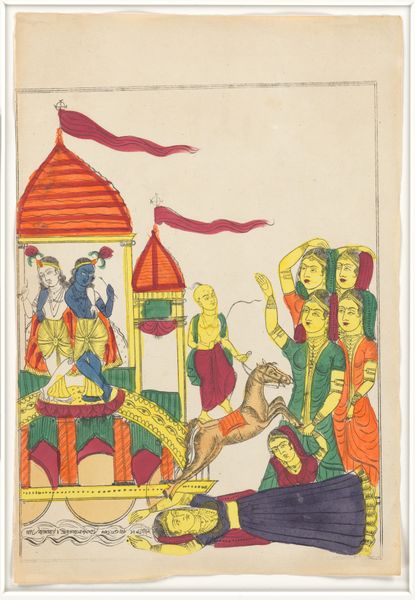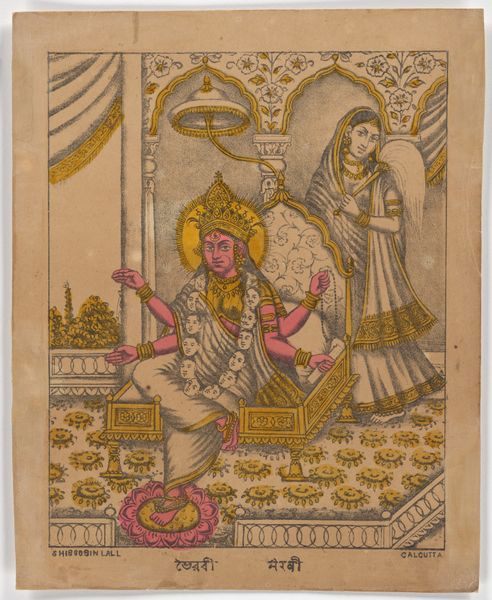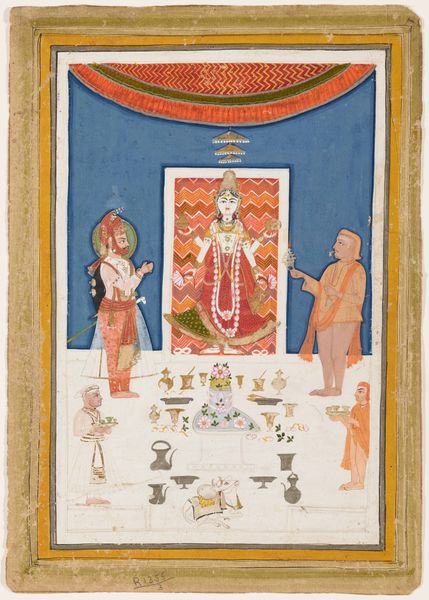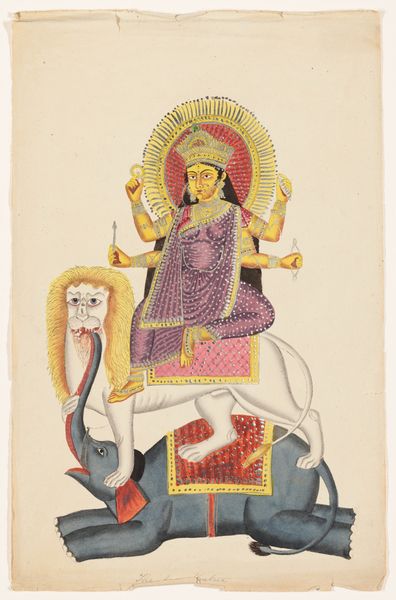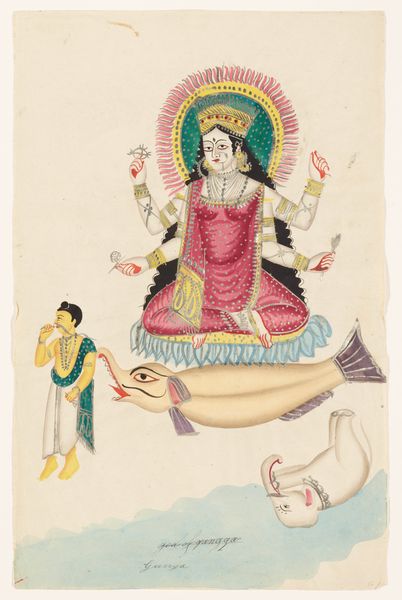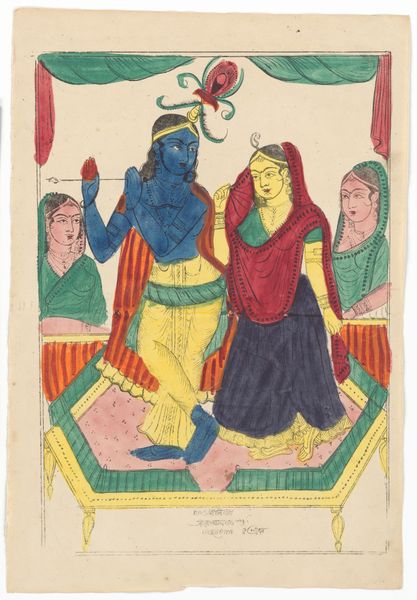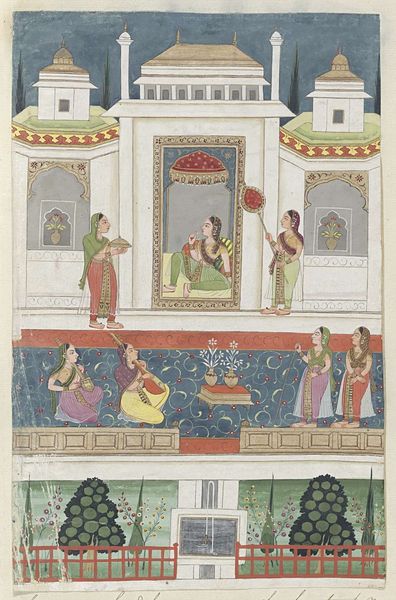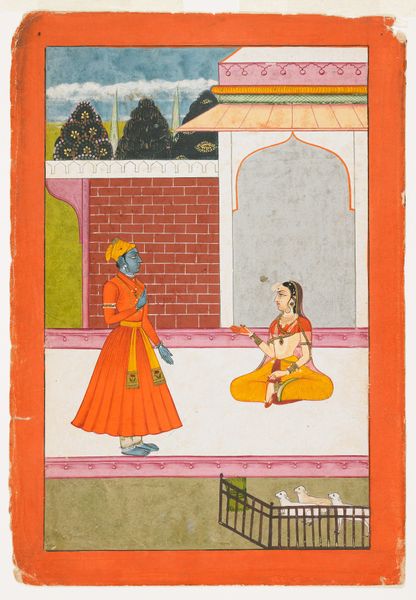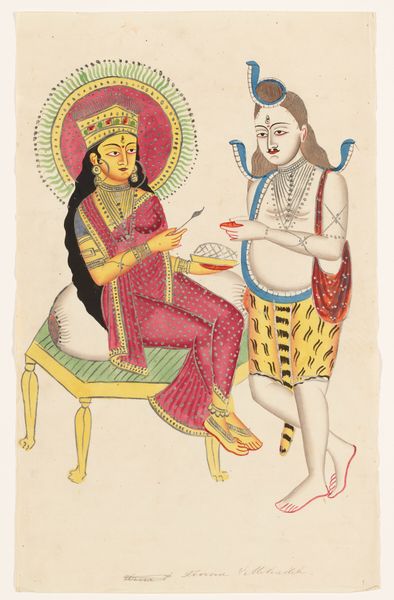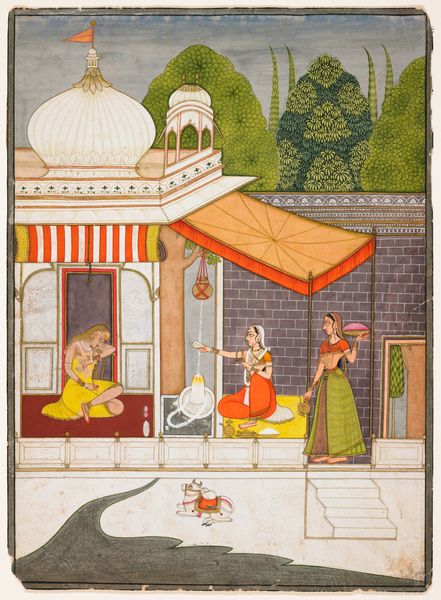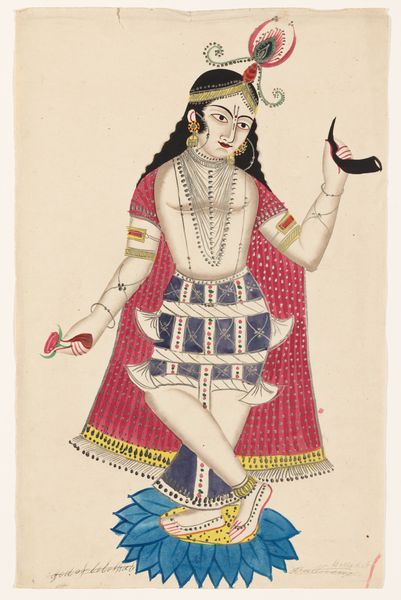
Shiva and Parvati on Nandi with Kartikeya and Ganesha c. 19th century
0:00
0:00
#
childish illustration
#
cartoon like
#
cartoon based
#
pastel soft colours
#
flat colour
#
illustrative and welcoming
#
watercolour illustration
#
cartoon style
#
cartoon carciture
#
cartoon theme
Dimensions: 17 5/16 x 11 5/16 in. (44 x 28.7 cm)
Copyright: Public Domain
Editor: Here we have "Shiva and Parvati on Nandi with Kartikeya and Ganesha," from around the 19th century. It's currently at the Minneapolis Institute of Art. The figures are rendered quite charmingly. I’m immediately drawn to its almost cartoonish style, especially the flattened perspective and bold colors. How do you interpret the purpose of the cartoon-like and almost ‘folk’ quality in rendering these deities? Curator: It’s a fascinating aspect, isn't it? Looking at the social context, we see that in the 19th century, there was an increase in art made for popular consumption, diverging from more formal courtly styles. The cartoonish rendering, flat colors, and simplified forms likely democratized religious imagery. This would make these deities more accessible to a wider audience beyond the traditional elite, influencing social engagement. Do you think this shift could change its cultural perception? Editor: That’s interesting. Making them more accessible and widely consumed makes sense. The idea of broader accessibility reframes it from a purely religious artifact to something interwoven with everyday life and popular culture, even political, if you will. How might this context shape the artwork's meaning, particularly when displayed in a modern museum? Curator: Excellent question. A museum display invites reflection on power structures. The placement and interpretation we offer implicitly or explicitly discuss colonial influences on art markets. This artwork, framed by a Western museum, encourages viewers to reflect on issues of representation, appropriation, and the complex layers of cultural exchange. Consider: Does this democratized view perhaps subtly disrupt older art historical assumptions of artistic merit rooted in academic art practice and materials? Editor: It's true! The very act of displaying what was once popular imagery inside a museum transforms it. I suppose it elevates a form of cultural expression. It reframes what counts as historically important art and visual culture. It challenges established art narratives, no? Curator: Exactly! Thinking about how institutions shape meaning allows us to deconstruct biases. I’ve found this discussion enlightening; thank you. Editor: Agreed. Considering its potential audience broadens its purpose considerably. Thanks for sharing this enlightening perspective!
Comments
minneapolisinstituteofart about 2 years ago
⋮
Shiva's family appears in front of a temple. Shiva and Parvati are seated on Shiva's bull vehicle, Nandi. Behind them, a Brahmin priest and an anthropomorphic representation of Shiva's bull carry their two infant sons, Ganesha and Kartikeya. Red curtains frame the upper corners of the page, possibly emulating those commonly found in the photographic studios of the time.
Join the conversation
Join millions of artists and users on Artera today and experience the ultimate creative platform.
